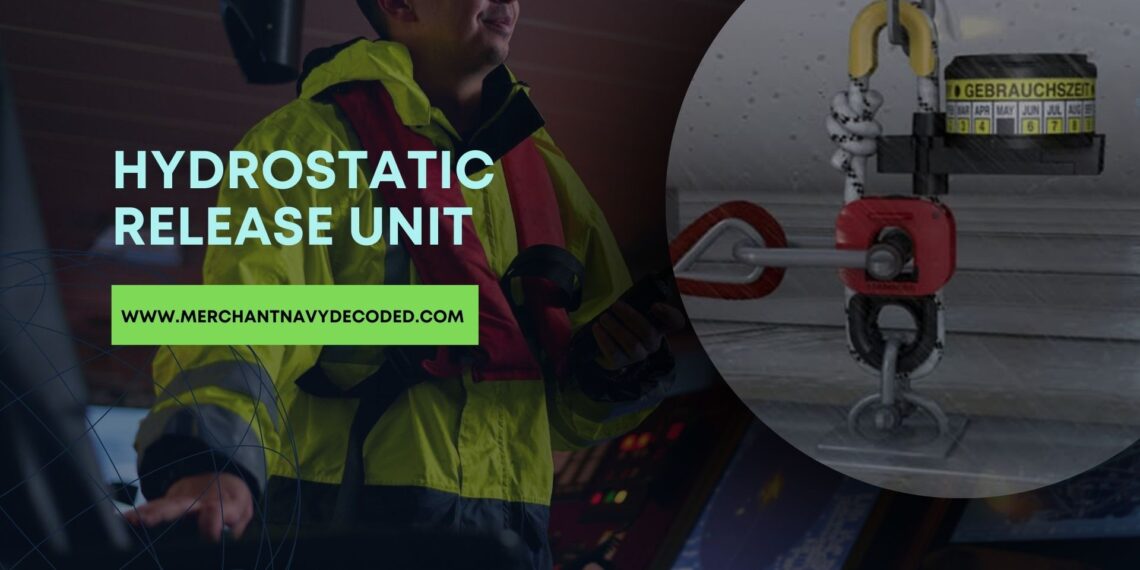Hydrostatic Release Unit (HRU): Why Is It So Important?
Hydrostatic Release Unit Overview
HRU or hydrostatic release units are used to release things underwater at a specific depth. They’re like underwater timers.
The blog covers:
- What HRUs are
- How they work
- Why they’re important
It’s a helpful guide for anyone who wants to learn more about HRUs.
What is a Hydrostatic Release Unit?
A hydrostatic release unit (HRU) is a critical component in underwater operations, designed to release an object such as a life raft or EPIRB at a predetermined depth or pressure.
A Hydrostatic Release Unit is a special underwater device that lets go of things at a certain depth. It’s like a timed-release capsule for underwater objects.
HRU helps us do things underwater at specific depths, like exploring the ocean or studying sea creatures.
Components of Hydrostatic Release Unit
1. Pressure Capsule
- Core Component: The pressure capsule is the heart of the HRU. It’s designed to sense the surrounding water pressure.
- Fluid-Filled: Inside the capsule, a fluid is contained. This fluid is compressible, meaning it can be squeezed into a smaller volume under pressure.
- Pressure Detection: As the water pressure increases, it compresses the fluid within the capsule. This compression triggers a mechanical change within the capsule.
2. Release Mechanism
- Activation Trigger: The release mechanism is activated when the pressure capsule senses the predetermined pressure threshold.
- Cutting Pin or Latch: The mechanism typically involves releasing a cutting pin or a latch, which detaches the connected object from its mooring or deployment platform.
- Mechanical or Electronic: Release mechanisms can be mechanical or electronic, depending on the HRU’s design.
3. Housing
- Protection: The housing is a protective enclosure that safeguards the internal components from the harsh underwater environment.
- Corrosion Resistance: It’s usually made of materials resistant to corrosion, such as stainless steel or titanium.
- Hydrostatic Pressure: The housing must be able to withstand the hydrostatic pressure at the desired operating depth.
4. Seal
- Watertightness: The seal ensures that water doesn’t penetrate the housing and damage the internal components.
- Reliability: It’s a critical component of the HRU’s long-term performance and reliability.
5. Electrical Components (in Electronic HRUs)
- Sensors: Electronic HRUs may use pressure sensors to measure the surrounding water pressure.
- Microcontroller: A microcontroller is often used to process the sensor data and control the release mechanism.
- Battery: A battery provides power for the electronic components.
6. Additional Components
- Corrosion Inhibitors: In some cases, corrosion inhibitors may be added to the internal components to enhance their lifespan.
- Lubricants: Lubricants can be used to reduce friction and ensure the smooth operation of the mechanical components.
HRU in Liferaft
Step 1: Prepare the HRU
- Check Settings: Make sure the HRU is set to the correct depth at which you want the life raft to release.
- Inspect for Damage: Look for any signs of damage or wear on the HRU. If you find any issues, have it repaired or replaced before connecting it.
Step 2: Attach the Painter to the HRU
- Locate the Attachment Point: Find the designated attachment point on the HRU. This is usually a loop or ring.
- Connect the Painter: Pass the painter through the attachment point and secure it using a suitable knot or shackle. Ensure the connection is strong and secure.
Step 3: Attach the Painter to the Ship
- Find the Designated Point: Locate the designated attachment point on the ship’s deck. This is often a strong point near the stern or side of the ship.
- Connect the Painter: Pass the other end of the painter through the attachment point on the ship and secure it using a strong knot or shackle. Make sure the connection is tight and won’t come loose.
Step 4: Secure the Weak Link
- Identify the Weak Link: The weak link is a special section of the painter designed to break under a certain amount of force. It’s usually located near the end of the painting that is attached to the HRU.
- Ensure Proper Placement: Make sure the weak link is positioned correctly in the painter. Refer to the manufacturer’s instructions for the exact placement.
- Secure the Weak Link: If necessary, use a knot or shackle to secure the weak link in place.
Step 5: Check for Slack
- Inspect the Painter: Once the painter is connected, inspect it for any slack. There should be a slight tension in the painter to ensure the life raft will detach from the ship if necessary.
- Adjust if Needed: If there is too much slack, adjust the painter to reduce it. However, be careful not to make it too tight, as this could prevent the life raft from releasing properly.
Working of HRU on a ship
When a cargo ship needs to release something underwater, like an anchor or a special container designed for deep-sea exploration, the HRU is employed.
Imagine a life raft HRU as a special underwater lock. It’s designed to release the life raft from the ship at a specific depth in case of an emergency.
- The Pressure Sensor: The HRU has a special sensor inside that can feel how deep it is underwater. It’s like a tiny pressure gauge.
- The Trigger Depth: The HRU is set to a specific depth, usually around 4 meters. This is the depth at which the HRU will release the life raft.
- The Trigger: When the ship starts to sink and reaches the 4-meter depth, the pressure sensor triggers a mechanism inside the HRU. It’s like a switch that turns on.
- The Cutting Action: This mechanism activates a sharp knife that cuts the rope or cable securing the life raft canister to the ship. It’s like a lock that opens.
- The Release: Once the rope is cut, the life raft canister is free to float away from the ship.
- The Painter Line: As the ship continues to sink, the painter line (a rope attached to the life raft) will stretch.
- Inflating the Raft: This stretching will inflate the life raft, making it bigger and more buoyant.
- Breaking the Weak Link: When the life raft is fully inflated, the increased buoyancy will cause a special weak link in the painter line to break. This weak link is designed to break under a specific amount of force, around 2.2 KN ± 0.4.
- Floating to the Surface: With the painter’s line broken, the life raft will now float to the surface of the water.
The HRU is like a special lock that only opens when the ship is sinking deep enough. When it opens, it releases the life raft, which then inflates and floats to the surface.
Frequently Asked Questions about HRUs
- What is a hydrostatic release unit?
A hydrostatic release unit is a device that is used to release an object, liferaft, or any tool in the ocean or out of the sinking ship. It is used in places onboard ships like in EPIRB or liferaft.
- How does an HRU unit work?
HRU or hydrostatic release unit works on the concept of water pressure. When the fluid inside the pressure chamber increases, it releases the razor-sharp blade that cuts the rope under the tension ultimately realizing the component attached to the HRU.
- What is HRU for EPIRB?
EPIRB is a safety device that helps in search and rescue whenever the ship is in distress. EPIRB is attached to HRU which releases the EPIRB automatically out of the sinking ship.
- What is HRU usage?
HRU is used to deploy a life raft or EPIRB in the event of a vessel sinking or a distressful situation.
Disclaimer :- The opinions expressed in this article belong solely to the author and may not necessarily reflect those of Merchant Navy Decoded. We cannot guarantee the accuracy of the information provided and disclaim any responsibility for it. Data and visuals used are sourced from publicly available information and may not be authenticated by any regulatory body. Reviews and comments appearing on our blogs represent the opinions of individuals and do not necessarily reflect the views of Merchant Navy Decoded. We are not responsible for any loss or damage resulting from reliance on these reviews or comments.
Reproduction, copying, sharing, or use of the article or images in any form is strictly prohibited without prior permission from both the author and Merchant Navy Decoded.



